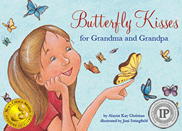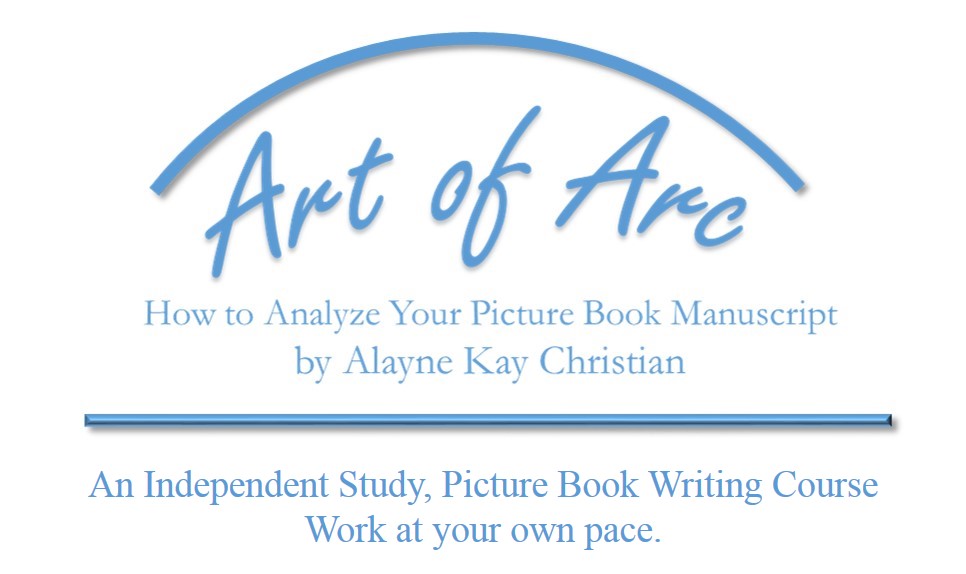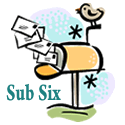Donna Cangelosi and Chana Stiefel have interviewed me for their blog KidLit Takaways. Thank you, ladies! In the interview, I share some picture books with good arcs and break them down to show the various plot points. I also offer a 25% discount off my picture book writing course Art of Arc. Because their blog’s theme is “Bite-size bits of wisdom & inspiration for writers on the go!” we weren’t able to include everything from the interview, so I offer some of the outtakes below.
How did you come up with the idea for your online writing class, Art of Arc?
After critiquing hundreds of picture book manuscripts, I saw the same issues repeatedly. As my professional critiques include mini lessons, I found myself recreating the same lessons but customizing them for each story I critiqued. There had to be an easier, more efficient way to do this. And a course was born.
The reason I created a course that focuses on the classic arc is because 90% of the stories I critique are built around that structure. Many successful published picture books are built around an arc on some level. It is the number one structure in picture books. Therefore, I believe this course fulfills a need that has not been available until now. Many courses are taught using the classic arc, but none goes into the detail that this course provides.
Define “story arc.”
Story arc (sometimes called narrative arc) refers to the plot’s development, and character arc refers to the character’s development. Sometimes this can get confusing, with kind of a which came first the chicken or egg type of conundrum. However, usually with picture books, neither comes first because they develop simultaneously as the story progresses. Your character can’t develop unless your plot creates events that instigate your protagonist’s growth or change. Your plot can’t develop unless your character reacts to the plot events through action that moves the story forward, hence developing the plot.
The character arc is the structure that shows how the character develops (grows/changes/or learns) over time. Without a change, the story would be flat, and the reader would not have much to relate to. Usually, the main character starts out with some sort of conflict that he tries to work through, and he is eventually forced to make a choice that leads to his change in thinking or growth. Sometimes the change in thinking is acceptance. Character arc is sometimes confused with character motivation (the thing that makes him take action).
Motivation is the “why” of the protagonist’s action.
The arc is the “how” of the change and growth that occurred because of the action he took.
So, motivation is the driver. It is the energy that moves the protagonist to react or act. His growth is the result of the actions that he took.
Arc determines the ups and downs that set the pace of your story. A good arc is key to engaging readers from beginning to end. There are many picture books based on a similar idea or theme. The arc helps to differentiate one of those same-topic picture books from the other. The narrative arc (also called story arc) is related to the external events and the character arc is about the protagonist’s inner journey, hence the importance of some sort of growth in the character by the end of the story. But still the two arcs form a symbiotic relationship. They rely on each other. The situations and challenges that your characters face are part of the story arc. The choices your character makes and the action he takes that lead to growth and change all fall into the character arc zone.
The main plot points of the story arc include the exposition, ordinary life, inciting incident, rising action, climax, falling action, and resolution. Not all picture books show the ordinary life. Many start at the inciting incident.
The beginning of the story usually provides the who, what, when, where, and why of the story. And the protagonist and his problem/goal are introduced.
Describe the class curriculum and learning objectives.
The focus of the course is the storytelling structure that uses a classic arc. The purpose of this course is to deepen writers’ understanding of picture books written with a classic arc and to introduce them to many other picture book structures. The course also addresses a number of common issues I have found in the manuscripts I critique.
The objective of the course is . . .
• To give a strong foundation in storytelling that is built around the traditional story arc
• To teach picture book writers some techniques and structures that will improve existing manuscripts and make future writing stronger
• To provide writers with the knowledge and tools to assist in analyzing their own work prior to investing in professional critiques
• To guide writers through a manuscript self-assessment process that may help prevent submitting manuscripts prematurely
• To show writers how to avoid common writing errors and apply writing elements that will enhance their stories in a way that takes them to a higher level
• To shed light on writing elements previously learned in less-detailed courses
• To expand writers’ ability to revise and polish their manuscripts
• To expand writers’ ability to develop a strong plot
The curriculum is based on the following lessons:
LESSON ONE: BEGINNINGS AND ENDINGS
LESSON TWO: BEYOND THE HOOK
LESSON THREE: OVERVIEW OF PICTURE BOOK PLOT STRUCTURE
LESSON FOUR: CAUSE AND EFFECT
LESSON FIVE: EPISODIC STORIES
LESSON SIX: THE MIDDLE – FIRST, SECOND, AND THIRD ATTEMPTS TO SOLVE PROBLEM OR REACH GOAL
LESSON SEVEN: DARKEST MOMENT, INNER AND OUTER CLIMAX, ENDING
LESSON EIGHT: SHOWING VERSUS TELLING
LESSON NINE: USING ELEMENTS OF FICTION IN NONFICTION
LESSON TEN: OTHER COMMON ISSUES
BONUS MATERIALS AND WRITING RESOURCES
Describe your background in writing?
I’ve written my whole life. First, I wrote for creative pleasure. Then I wrote in various jobs. I wrote newsletters, processes, and procedures. I wrote greeting cards for a small business my sister and I had. When my granddaughter was born, my interests turned to children’s book writing. I started my children’s writing journey and education with the Institute of Children’s Literature, moved on to their advanced course, and then I started taking courses from authors, editors, and other writing schools. In addition, I went to SCBWI conferences and workshops as well as other writing workshops and webinars. There is a partial list of the courses I’ve taken on my website.
And in critiquing?
I’ve been critiquing for ten years. It started with critique groups. Then as I progressed with my knowledge, I felt the need to help other writers, so I started critiquing people’s manuscripts out of generosity. In the process, I learned things I hadn’t learned in the courses I had taken. Issues that I sensed were concern worthy piqued my curiosity and drove me to research. I was especially interested in understanding plot and arc on a deeper level because I saw so many stories that were missing cause and effect or had no arc or a weak arc. The more I critiqued, the more people would tell me how much I helped them understand and strengthen their story. So, I decided I must be pretty good at this critique thing. After writing hundreds of picture book critiques, I opened my professional critique service in January 2014. In 2016, I was invited by Julie Hedlund to be a Critique Ninja for 12 X 12. This will be my third year as a Critique Ninja. I still give critiques away to help other writers. For paid critiques, I mostly critique manuscripts for my students and alumni because I know that I can refer back to lessons that they should revisit to help them strengthen their manuscripts. My students get a deep discount on critique fees.
What are some of the common mistakes writers make regarding story arc?
There are so many! I could write a book, but I will give a few of the top ones that have major impact on the story.
I see a lot of episodic stories. I explain episodic stories on my blog.
Many stories have a lack of growing tension or lack of variety in action.
It’s common to read stories where it’s not clear who the protagonist is. When I query the author, we often find who they think the protagonist is does not convey in their story. This is usually a sign of an episodic story or a weak or nonexistent arc.
I find that the darkest moment and inner and outer climax are either weak or missing.
There is often a lack of motivation or stakes that drive the protagonist to take action. This and a lack of obstacles (or try and fail scenes) result in a story with very little to no emotional core. The lack of stakes and obstacles prevent the rise in action and the tension that keep the reader engaged.
I see many weak beginnings that don’t hook me as a reader. They don’t create questions in my mind that make me want to keep reading. They don’t set up any expectations that make me want to keep reading.
And then there are weak endings. Just a few examples: The story is resolved too easily. Someone else steps in and saves the protagonist. It might be predictable. There are loose ends left dangling.
Tell us about your writing career.
I covered this pretty much in my answer about my background in writing. I will add that my picture book Butterfly Kisses for Grandma and Grandpa was my first published book. And it won the Mom’s Choice Gold Medal and the Independent Publisher’s Silver Medal. My first chapter book Sienna, the Cowgirl Fairy: Trying to Make it Rain was released last year. It is the first in a series with three other Sienna books that are scheduled to follow. I have started giving chapter book critiques, and gosh darn it, if I’m not pretty good at those, too 😉
Can you share any success stories from your students?
While some of my clients have signed with agents or sold books to publishers, I don’t believe that it is entirely a result of taking Art of Arc or any one course. I believe that it usually takes a combination of courses (where the author gleans a bit from each one). And then there are critique groups, professional critiques, conferences, and craft books, and on and on. It’s also important to give credit to the determination and the blood, sweat, and tears that authors put into their work. In my opinion, reaching success as a writer usually takes a village. I’m happy that Art of Arc can play a role in the growth of many writers’ knowledge. I will share a few recent comments about the course below.
Michael Samulak said, “I don’t have a ‘success’ story in the traditional sense, but I can at least support the ‘village’ idea and say that the course has helped me with my writing and approach. I recently was able to finish a story that I am currently submitting to agents. I realized how much of my writing up to the ARC has been ideas more than a complete story.”
One of my students, Karla Valenti has signed with Essie White and her picture book Marie Curie and the Power of Persistence has been acquired by Sourcebooks. This is the first book in the My Super Science Heroes picture book series. Following is what Karla shared with me about how Art of Arc impacted her writing.
“So I took your course after I had taken a few other PB courses. What I loved about it was that it (1) reinforced a lot of what I already knew (hooks, story structure, conflict, showing vs. telling, etc) but it provided supplemental material to study, (2) there was a lot of new content that was really useful and that I’d never read before (e.g. episodic stories and using elements of fiction in NF), and (3) you have assembled a truly fantastic list of resources!!
In the end, the exercise of working through all of these materials, truly helped cement (and ultimately internalize) key elements of picture book storytelling which have undoubtedly made me a better writer.
As for how this helped me in my career, the course gave me a number of tools I could use to improve upon my stories as well as the confidence to know that I was on the right track as a writer. It also helped me become better at reviewing my work and critiquing the work of others. This last part continues to be a huge benefit as I find no substitute for reading picture books (published or otherwise) and trying to understand what makes them resonate.
On a personal note, I greatly appreciate the opportunity to also learn from you through your manuscript critiques. It is clear you have a solid understanding of effective and meaningful storytelling, and your insights have been invaluable in helping me develop my own work.”
For those who might be interested, there are many more testimonials on my website.
Other suggestions for picture book writers.
Read, read, read. Read picture books. Read books on writing.
Analyze picture books written with a classic arc. One good way to do this is to write out all the plot points in simple sentences. I find when writing critiques that sometimes getting away from the wonderful writing and distilling the story down to simple, bland steps of the protagonist’s actions, challenges, and turning points, I can see the actual structure better.
You can find more information on Art of Arc on my website. To learn how to get your 25% discount, be sure to visit KidLit Takeaways.
Read Full Post »






 .
.










